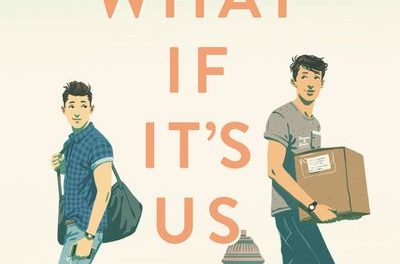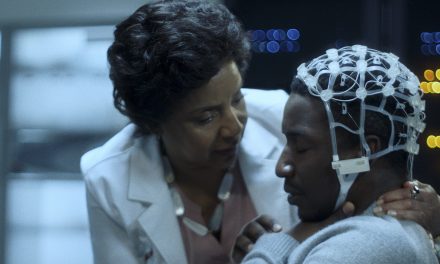What does a Japanese movie from the ’50s have to do with “Star Wars”? University Distinguished Professor at Emory University Salman Rushdie and members of the Emory faculty had a lot to say about the connection during a panel discussion this past Friday. The film “The Hidden Fortress,” directed by Akira Kurosawa, and its profound influence upon “Star Wars Episode IV: A New Hope” was the focus of the conversation. “The Hidden Fortress” is an often comical tail beginning with two peasants, commonly perceived as the models for C-3PO and R2D2, wandering about after having just fought in a battle during the Warring States period in Japan. The peasants become entangled with the great general of the defeated clan who is trying to protect his princess so that she may begin to restore her nation. The princess is masculine in personality and rebellious and is viewed as the precursor to Princess Leia.
Narrative, style and technological innovation were some of the topics that were delved into, but the thin line between paying tribute and plagiarizing ignited the opinions of the panel the most.
The other panelists were Eddy Von Mueller, lecturer of the Department of Film and Media Studies, and Cheryl Crowley of the Russian and East Asian Languages and Cultures Department. The panel was moderated by Matthew Bernstein, the Chair of the Department of Film and Media Studies.
The discussion began with Mueller explaining how George Lucas, the director of “Star Wars,” is part of the first generation of American filmmakers to have access to international films and films that were made a relatively long time ago. Lucas is one of the “film brats,” as they are called, along with other acclaimed directors such as Steven Spielberg and Martin Scorsese. These men were part of the first generation of American directors to go to film school and thoroughly study film history. Thus, they were the first to be influenced by world cinema. This unprecedented access is the reason that Lucas was able to see and study a film like “The Hidden Fortress” and use some of what he saw as the inspiration for many aspects of “A New Hope.”
Mueller went on to say, despite admitting to having seen the film 13 times when it was released, “while it is a wonderful film full of wonderful influences, it’s not that good. ‘Star Wars’ is a great film that isn’t a good film.” He explained his odd statement by asserting that Kurosawa, while making “The Hidden Fortress,” was already a master filmmaker, whereas Lucas was on the verge of his big break and had a “gee whiz, wouldn’t it be cool if … ” attitude. When I asked the panel where the line between reference and plagiarism is crossed, however, Mueller wholeheartedly defended Star Wars as original, if not in terms of narrative or style, then in terms of technological innovation and scope.
Rushdie also answered this question, citing the specificity of a reference as a guide to whether plagiarism has occurred. Surprisingly though, Rushdie said that after watching “Hidden Fortress” again after not having seen it in years, he noticed less influence upon “Star Wars” than he had previously. He said that it is quite clear that Kurosawa’s work is an influence upon Lucas’, but that Lucas did not “steal” any ideas from it.
There is a scene in Kurosawa’s film in which two generals duel, and the duel, in Rushdie’s words, “goes on and on and on.” Rushdie saw more of a similarity in the three Star Wars prequels to this longer, more “balletic,” and more choreographed type of fight sequence than he saw in A New Hope. He did, however, have much to say on the topic of crossing the line into plagiarism, citing Clint Eastwood’s character in Sergio Leone’s “A Fist of Full of Dollars.” Rushdie stated that Eastwood’s character is too closely related to the main character in “Yojimbo,” by Kurosawa, and in this instance it is “too close for comfort.” He made it clear that general influences are acceptable, but that when specific characters, or specific plots recur, a line has been crossed.
I sat down with Bernstein after the panel discussion had concluded to hear his thoughts on how the event went. He expressed that the panel speakers were the perfect people to speak on this topic and that Rushdie’s insights were invaluable as always. He also said that Rushdie is a film “fanatic,” and has an extensive knowledge of film history which certainly came through during the discussion.
Also, Bernstein does not believe that Lucas gives enough credit to Kurosawa in influencing him. When asked about Rushdie’s comment that he now thinks that “The Hidden Fortress” had less of an influence upon “Star Wars” that he had originally believed Bernstein responded by saying that no matter to what degree one believes that the influence pervades, there is definitely a “core.” He then went on to say that on the other hand, “Star Wars” is undoubtedly a thing unto itself and that its innovation and effect upon filmmaking from the time of its release have been unquestionable.
The panel was fascinating not only because of the discussion of the influence of “Hidden Fortress” upon “Star Wars,” but also because of the opinions of each of the panelists, Rushdie most of all, on the subject of plagiarism and when homage to a film becomes stealing from a film.
– By Eric Frank
The Emory Wheel was founded in 1919 and is currently the only independent, student-run newspaper of Emory University. The Wheel publishes weekly on Wednesdays during the academic year, except during University holidays and scheduled publication intermissions.
The Wheel is financially and editorially independent from the University. All of its content is generated by the Wheel’s more than 100 student staff members and contributing writers, and its printing costs are covered by profits from self-generated advertising sales.





